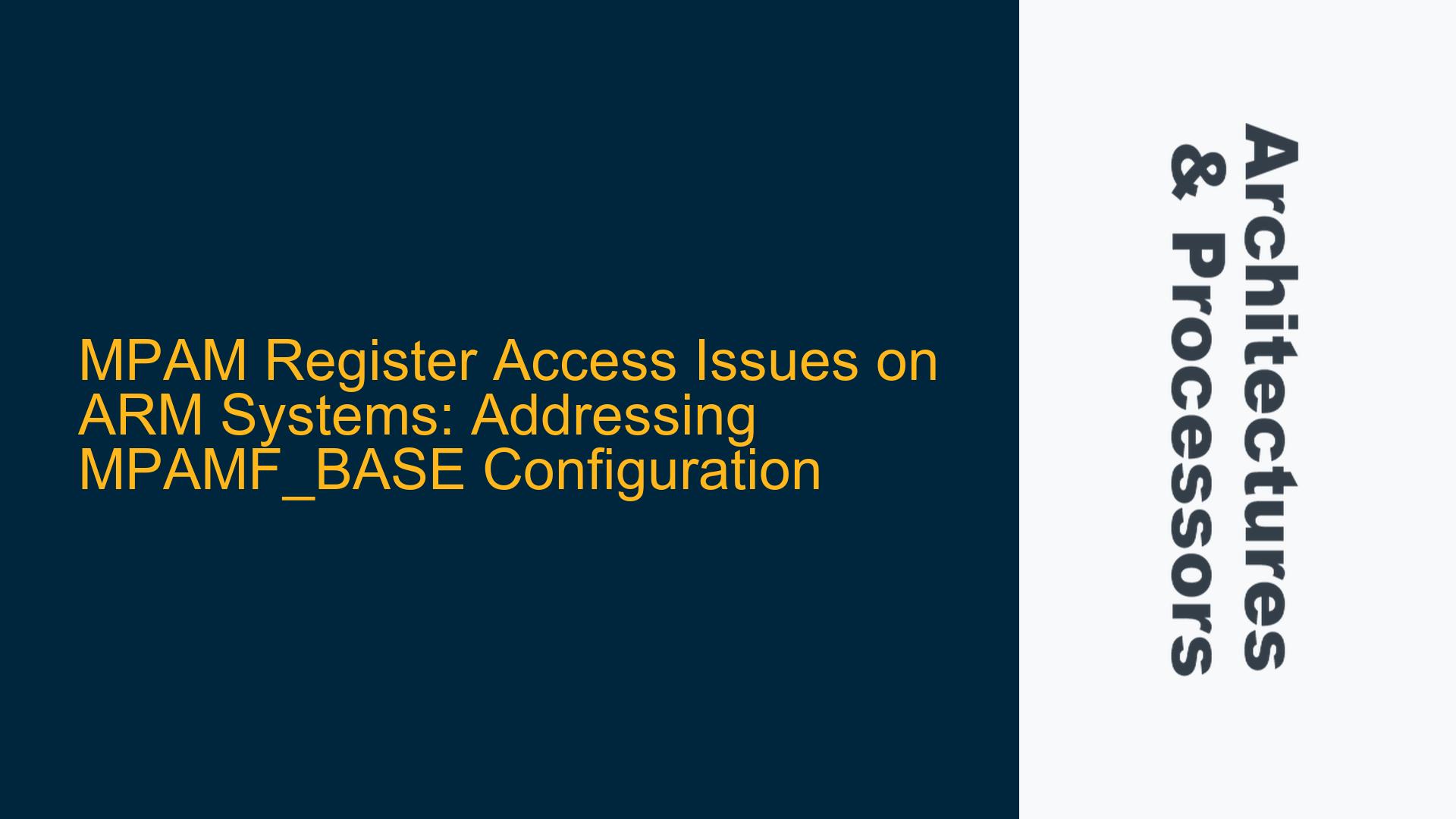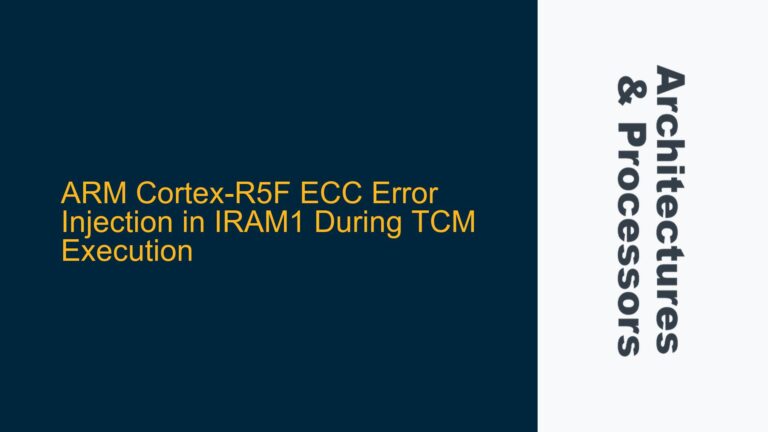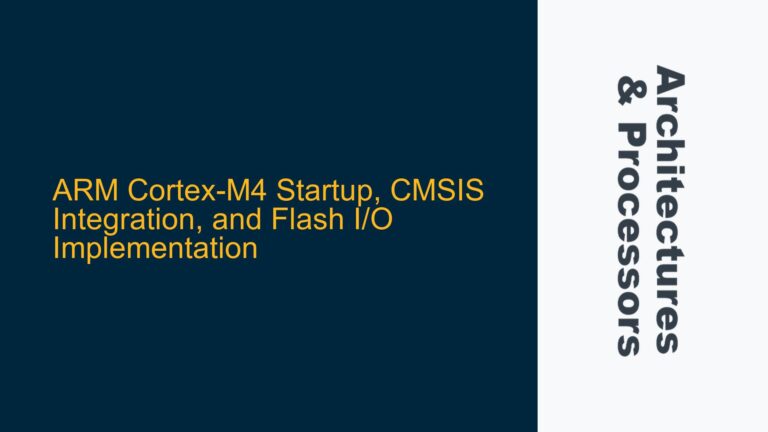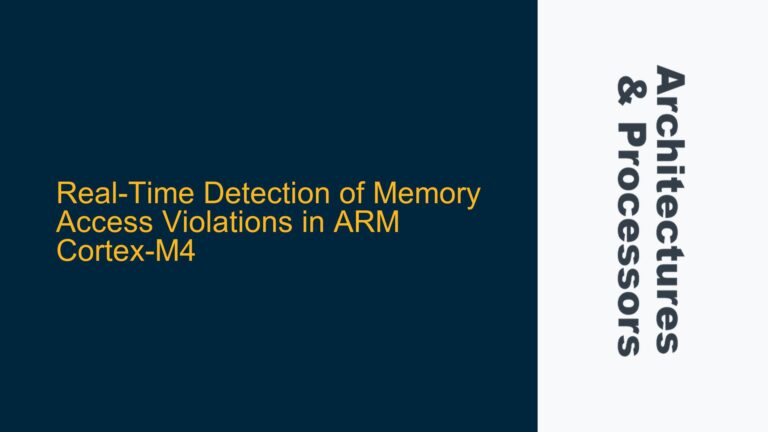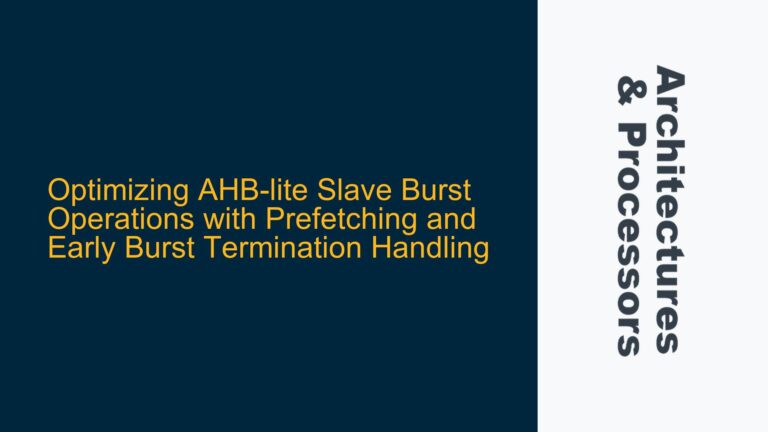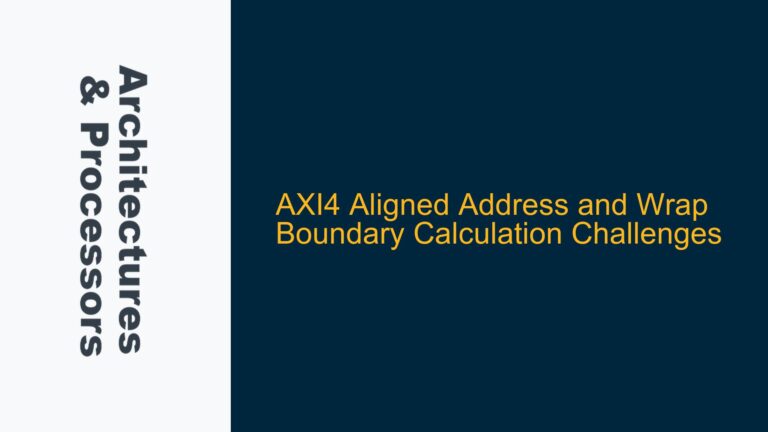MPAMF_BASE Address Configuration Challenges in ARM Systems
The Memory Partitioning and Monitoring (MPAM) architecture extension is a critical feature in modern ARM systems, particularly for resource management and performance optimization in multi-core environments. However, one of the most common challenges developers face is correctly configuring and accessing the MPAM memory-mapped registers, specifically the MPAMF_BASE address. This issue arises due to the lack of explicit documentation or standardized memory maps for MPAMF_BASE across different ARM platforms, especially when working with simulation environments like the Fixed Virtual Platform (FVP).
The MPAMF_BASE address is a foundational component for accessing MPAM functionality. It serves as the base address for the MPAM Feature Registers, which are essential for configuring memory partitioning, cache allocation, and bandwidth monitoring. Without a properly defined MPAMF_BASE, the software module cannot interact with the MPAM hardware, rendering the feature unusable. This issue is exacerbated when working with FVP platforms, as the memory map for MPAMF_BASE is often not explicitly defined in the platform documentation.
The core of the problem lies in the fact that the MPAM architecture extension document provides only a conceptual framework for MPAMF_BASE but does not specify its exact memory address. This omission requires developers to derive or configure the address based on the specific implementation, which can vary between ARM cores, platforms, and firmware configurations. Additionally, the MPAMF_BASE address may differ depending on the security state (secure vs. non-secure) and the runtime context (real-time vs. relaxed), further complicating the configuration process.
Firmware Table Descriptions and MPAMF_BASE Variants
The MPAMF_BASE address is not a single static value but rather a set of addresses that depend on the system’s configuration and operational context. These variants include MPAMF_BASE_s (secure), MPAMF_BASE_ns (non-secure), MPAMF_BASE_rt (real-time), and MPAMF_BASE_rl (relaxed). Each variant corresponds to a specific operational mode or security state, and the firmware must define these addresses in the Memory System Control (MSC) table.
The MSC table is a critical component of the ARM firmware architecture, as it provides the runtime environment with the necessary memory mappings and configurations for hardware features like MPAM. However, the process of defining MPAMF_BASE in the MSC table is not always straightforward. The firmware must account for the platform’s memory layout, security requirements, and operational constraints, which can vary significantly between implementations.
One of the primary challenges is ensuring that the MPAMF_BASE addresses are correctly aligned with the platform’s memory map. Misalignment can lead to access violations, undefined behavior, or even system crashes. Additionally, the firmware must ensure that the MPAMF_BASE addresses are consistent across different operational modes and security states. For example, the MPAMF_BASE_s address must be accessible only in the secure state, while MPAMF_BASE_ns must be accessible in the non-secure state. Failure to enforce these access controls can result in security vulnerabilities or functional errors.
Another consideration is the interaction between the MPAMF_BASE addresses and the system’s cache architecture. Since MPAM involves cache partitioning and monitoring, the firmware must ensure that the MPAMF_BASE addresses are mapped to regions of memory that are cache-coherent and accessible to the MPAM hardware. This requires careful coordination between the firmware, the memory management unit (MMU), and the cache controller.
Implementing MPAMF_BASE Configuration and Access Controls
To address the challenges associated with MPAMF_BASE configuration and access, developers must follow a systematic approach that includes firmware table configuration, memory map alignment, and access control enforcement. The following steps outline a comprehensive solution for implementing MPAMF_BASE in ARM systems.
Step 1: Define MPAMF_BASE Addresses in the MSC Table
The first step is to define the MPAMF_BASE addresses in the MSC table. This involves specifying the base addresses for each variant (MPAMF_BASE_s, MPAMF_BASE_ns, MPAMF_BASE_rt, and MPAMF_BASE_rl) based on the platform’s memory map. The addresses must be aligned with the platform’s memory layout and must not overlap with other critical memory regions.
To ensure consistency, the firmware should use a centralized configuration file or script to define the MPAMF_BASE addresses. This file should be referenced during the firmware build process to generate the MSC table entries. The following table provides an example of how the MPAMF_BASE addresses might be defined in the MSC table:
| MPAMF_BASE Variant | Address | Description |
|---|---|---|
| MPAMF_BASE_s | 0x80000000 | Base address for secure MPAM registers |
| MPAMF_BASE_ns | 0x80010000 | Base address for non-secure MPAM registers |
| MPAMF_BASE_rt | 0x80020000 | Base address for real-time MPAM registers |
| MPAMF_BASE_rl | 0x80030000 | Base address for relaxed MPAM registers |
Step 2: Align MPAMF_BASE Addresses with the Memory Map
Once the MPAMF_BASE addresses are defined in the MSC table, the next step is to ensure that they are correctly aligned with the platform’s memory map. This involves verifying that the addresses do not conflict with other memory regions, such as the kernel, device memory, or reserved areas.
To achieve this, developers should consult the platform’s memory map documentation and use tools like memory map viewers or debuggers to inspect the memory layout. If conflicts are detected, the MPAMF_BASE addresses must be adjusted accordingly. It is also important to ensure that the MPAMF_BASE addresses are within the addressable range of the MPAM hardware and are accessible to the CPU.
Step 3: Enforce Access Controls Based on Security State and Operational Mode
The final step is to enforce access controls for the MPAMF_BASE addresses based on the system’s security state and operational mode. This involves configuring the MMU and the system’s security extensions to restrict access to the MPAMF_BASE variants as follows:
- MPAMF_BASE_s should be accessible only in the secure state.
- MPAMF_BASE_ns should be accessible only in the non-secure state.
- MPAMF_BASE_rt should be accessible only in real-time mode.
- MPAMF_BASE_rl should be accessible only in relaxed mode.
Access controls can be implemented using the ARM TrustZone technology and the MMU’s permission bits. For example, the firmware can configure the MMU to mark the MPAMF_BASE_s region as secure-only and the MPAMF_BASE_ns region as non-secure-only. Similarly, the firmware can use the system’s real-time and relaxed mode flags to control access to MPAMF_BASE_rt and MPAMF_BASE_rl.
Step 4: Validate MPAMF_BASE Configuration and Access
After configuring the MPAMF_BASE addresses and enforcing access controls, the final step is to validate the configuration. This involves testing the MPAM functionality on the target platform to ensure that the MPAMF_BASE addresses are correctly mapped and accessible.
Developers can use debuggers, memory inspection tools, and MPAM-specific test cases to verify the configuration. For example, they can write test software that attempts to access the MPAMF_BASE addresses in different security states and operational modes, ensuring that access is granted or denied as expected. Any discrepancies should be investigated and resolved by revisiting the MSC table configuration, memory map alignment, or access control settings.
By following these steps, developers can successfully configure and access the MPAMF_BASE addresses in ARM systems, enabling the full functionality of the MPAM architecture extension. This approach ensures that the MPAM registers are correctly mapped, accessible, and secure, providing a solid foundation for implementing memory partitioning and monitoring features in multi-core ARM environments.
